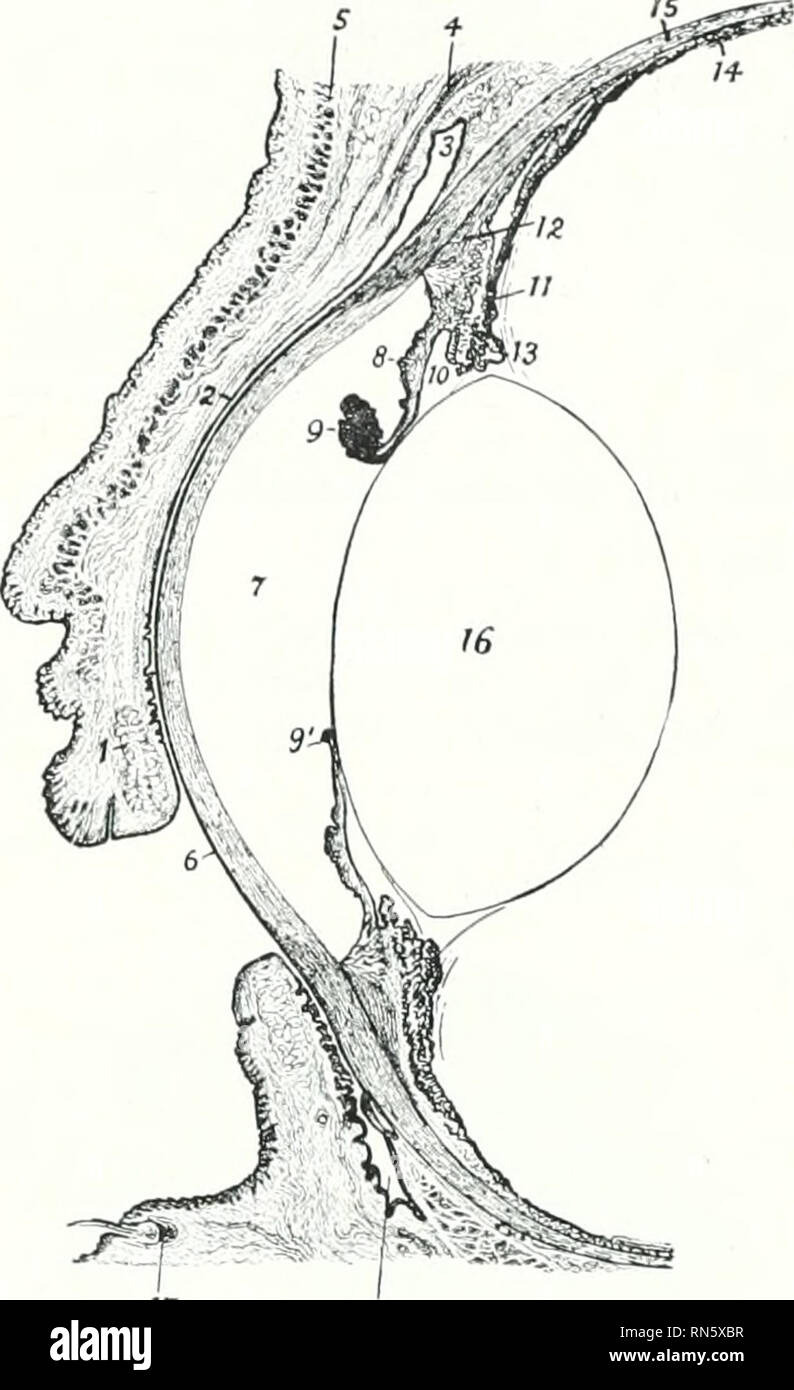. The anatomy of the domestic animals. Veterinary anatomy. 858 THE SENSE ORGANS AND SKIN OF THE HORSE temporal (AnguUis oculi inedialis, lateralis). The lateral angle is rounded when the vyv is open, Init the medial angle is narrowed and produeed to form a 3-shaped l)ay or recess, termed the lacrimal lake (Laeus laerimaHs). In this there is a roumled pigmented prominence knowTi as the lacrimal carimcle (Caruncula lacrimalis); it is about the size of a small pea, and is covered with modified skin, connected with that of the medial commissure, from which project a munber of hairs iirovided with

Image details
Contributor:
Library Book Collection / Alamy Stock PhotoImage ID:
RN5XBRFile size:
7.2 MB (220.8 KB Compressed download)Releases:
Model - no | Property - noDo I need a release?Dimensions:
1236 x 2022 px | 20.9 x 34.2 cm | 8.2 x 13.5 inches | 150dpiMore information:
This image is a public domain image, which means either that copyright has expired in the image or the copyright holder has waived their copyright. Alamy charges you a fee for access to the high resolution copy of the image.
This image could have imperfections as it’s either historical or reportage.
. The anatomy of the domestic animals. Veterinary anatomy. 858 THE SENSE ORGANS AND SKIN OF THE HORSE temporal (AnguUis oculi inedialis, lateralis). The lateral angle is rounded when the vyv is open, Init the medial angle is narrowed and produeed to form a 3-shaped l)ay or recess, termed the lacrimal lake (Laeus laerimaHs). In this there is a roumled pigmented prominence knowTi as the lacrimal carimcle (Caruncula lacrimalis); it is about the size of a small pea, and is covered with modified skin, connected with that of the medial commissure, from which project a munber of hairs iirovided with sebaceous glands. The litis unite on either side and form the commissures, medial and lateral (Connnissiu'a i5ali)el)rarinn iiicilialis, lateralis). The anterior sur- face of the lids (Facies anterior palpe- brarimi) is convex and is covered with very short hair. A considerable num- ber of tactile hairs are scatt(>red over the lower part^ of the lower lid, but on the up))(T lid they are very scanty. The infra])alpebral depression (Sulcus infrapal])ebralis) indicates somewhat indistinctly the limit of the lower lid. The upper lid is marked by two fur- rows wlien raised. The posterior sur- face (Facies posterior palpel)rarum) is ada]rted to the free surface of the eye- 1 lall antl is covered by the palpebral C(jnjimctiva. The free border of the litl is smooth and usually black. It has a well-defined posterior margin (Limbus palpebralis posterior), along which the ducts of the tarsal glands open. The anterior margin (Limbus palpeliralis anterior) bears stiff hairs termed the cilia (eyelashes). On the upper lid the cilia are long and num- erous except at its medial third, where they are very small or absent. On the lower lid the cilia are often scarcely distinguishable from the ordinary hairs; in other cases they may be clearly seen except near the lateral canthus, and are much finer and shorter than those of the u]3per lid. The edge of each lid is pierced near the medial angle